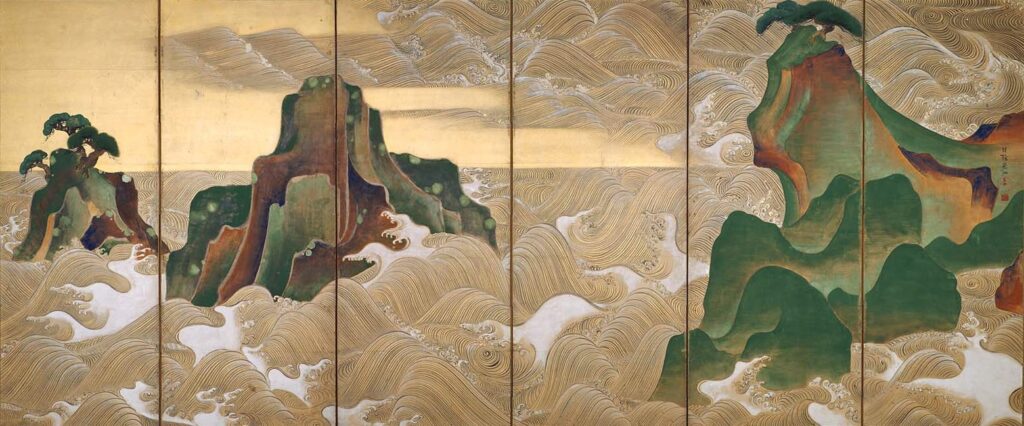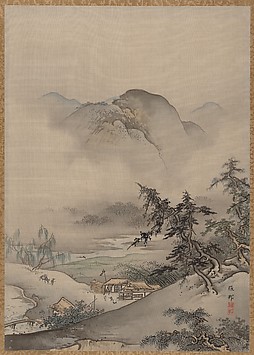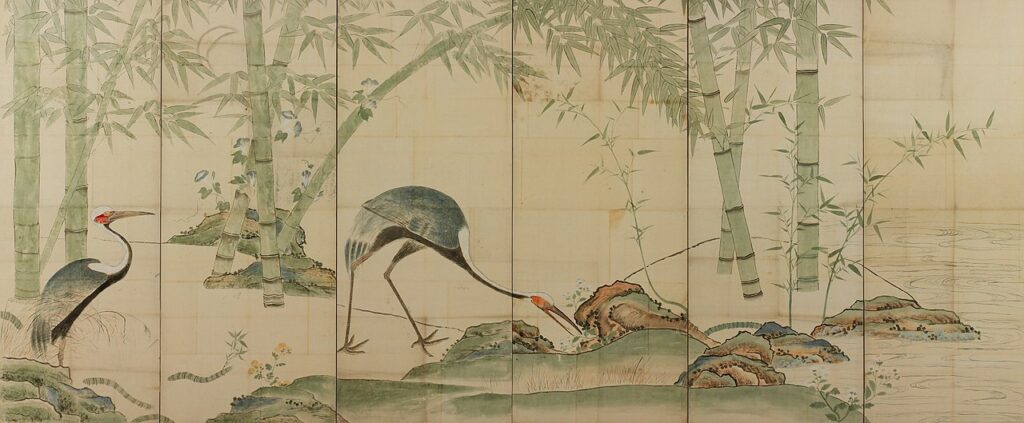“It is not that ‘I am empty’, but rather, that ’emptiness is I’” (Masao Abe, Zen and Western Thought, 13)

To be religious is to live from the standpoint of emptiness
Nishida goes to great lengths to describe the process whereby ultimate reality, i.e., nothingness, what he also calls the “formless world,” is also dynamic, and self-expresses as the world of forms – the phenomenal/historical world – through the conscious self of each individual, which is a field of nothingness (basho), at once “creating” the world in the present moment, and allowing individuals to become true selves and true individuals. More precisely, the conscious individual selves at all times reflect the world and, as it were, re-process it to match their concrete experience, in a two-way movement which turns individuals collectively into co-creators of the world, not out of any autonomous power, but as conduits for the self-expression of ultimate reality.
In other words, whereas in India, Buddhism tended to contrast the impermanence of illusory phenomena, and the deeper reality of emptiness, presenting awakening as a breaking free from the process of rebirth and a release from the world, in China, and even more so in Japan, reality was seen as change, that is, as such, phenomenal: awakening was simply the realisation that one’s life unfolded in a world of phenomena, which are indeed empty, the forms of the formless. Living in a world of phenomena recognised as being forms empty of own being is living from the standpoint of nothingness. In the traditional Far East, that world of phenomena is a world concretely experienced, lived in its actuality here and now, and impermanence is hailed as activity, dynamism and change: it is life itself. This particular view of the Far East has been referred to as “Asian nothingness” (toyoteki mu).” Whereas the Indian Buddhist anatman (no own being) and Nagarjuna’s sunyata (emptiness) are epistemological concepts – referring to the fact that things are only forms, “Asian nothingness” refers to a lived experience of reality as a way arising naturally out of nothingness. As Campbell aptly said, India says “All is illusion: let it go,” and China “all is in order, let it come.” In India, enlightenment (samadhi) with the eyes closed, in Japan, enlightenment (satori) with the eyes open. The word moksa (release) has been applied to both, but they are not the same. (Joseph Campbell, The Masks of God – Oriental Mythology, 30-31)

As it welcomed change as an inherent order which should be trusted, China had embarked on a rather involved articulation of the processes of change. In particular, it showed how forms arose as pairs of opposites, symbolised as yin and yang. The Yijing provides a detailed guide of the various configurations which stimulate the diviner’s imagination trying to intuit the unfolding of events in real time. The yin-yang formula constitued the logical system used in various fields, from diet to medicine to architecture to art and of course religious practice.
Present on Nishida’s mind when he articulated his doctrine of “reality as the self-identity of absolute opposites”, for short, “self-contradictory identity” was also the Buddha’s doctrine of co-dependent origination, which can be regarded as the Indian form of the yin-yang logic. In co-dependent origination, all concepts are described as arising in interdependence with each other. This includes an arising in pairs of opposites – short and long, right and left, light and dark, life and death, good and evil. One cannot know what short is unless one also knows what long is. Each step in the process of change is as such a death-life process as the old must “die” to make way for the new. More widely, this includes the interconnectedness of phenomena in nature, how species develop relative to each other, how any occurrence anywhere triggers changes near and far, as everything at all times interacts with everything else.
Western philosophy failed to express the uniqueness of the particular, that which is actually experienced
But, rather than explicitly starting from either yin-yang or co-dependent origination, Nishida turned to Aristotle! This was of course to be expected from a philosopher wishing to use the language of Western philosophy. After Plato, Aristotle is regarded as the founder of metaphysics, the view that reality is Being, as logos, meaning that it is shaped by Ideas, ideal forms existing either in a metaphysical supra-sensory world, or as abstracted from what we see and experience, and as it were, embodied in words. As Parmenides had it, “to gar auto noein estin te kai enai,” “to think and to be are the same thing,” which Heidegger re-interpreted as “to think (learning) and to be (presencing) belong to each other.” (Martin Heidegger, Zähringen Seminar -1973) is (being) is defined as what can be known, and things can only be known through naming – logos, language. By contrast, in the East, “what is” is apprehended through experience. Experience grasps the “that it is” of a thing: “what” the thing is is secondary since it can never be known precisely. Things are constantly changing, and one cannot have names for all the forms they take.
For Aristotle, however, and the West, “To know a thing is to name it, and to name it is to attach one or usually more universal predicates to it. Not only is the fixed within the flow alone knowable, but the universal in the individual as well.” (Robert E Carter, The Nothingness Beyond God, 25-26) To be known is to be named; to be named is to be associated with a universal, for instance, the universal “flower.” When attached to a particular thing in front of me, the universal “flower” tells me that this thing is a flower. But since flower is a universal, what is really happening is that what a particular thing is is known by using what it has in common with other things: it does not therefore allow a knowledge of the thing as particular, in its uniqueness. Nishida is adamant that Aristotle, whose stated intent was to know things as particular, has failed to achieve his goal. In life, we always encounter particular flowers, never flower as such … Concrete experience is an existential grasp of things as particulars. Aristotle could not get to that point because his thought was shaped by a philosophical tradition which valued the static over the changing. “Greek philosophy considered that which transcends time, the eternal, to be true reality, and, on the contrary, that which moves in time to be imperfect.” (Nishida Kitaro, Fundamental Problems of Philosophy, 39)

Nishida was able to rise above that view by noticing that universals were empty. Already in An Inquiry Into The Good, he notices that colours arise in co-dependence upon each other – for example red in connection with blue, or green, but the very multiplicity of colours points to a universal which is called “colour,” and that universal “colour” itself has to be without colour – that is, it has to be empty of colour – in order to be all the different colours. This led Nishida to the notion that the many arise out of the One, and the One arises out of the many. The One is also Nothingness, since you cannot know the One as One, so the Many naturally arise out of the One/Nothingness, as the world of forms. In the process of the self-expression of Nothingness into the world of forms through the conscious self of the individual, the self-less consciousness of that individual is the basho, or place of nothingness, out of which the world is co-created. The logic whereby all things arise self-contradictorily, is the logic of basho, the place of nothingness, and this is a religious worldview, because it is rooted in egoless self-consciousness, or no-mind. Nishida here appears to have arrived at the exact opposite conclusion to Aristotle’s principle of non-contradiction – a thing cannot be itself and its opposite. In fact Nishida holds that Aristotle’s non-contradiction is correct at the conceptual level, but self-contradictory identity embraces a deeper truth, which includes a grasp from one’s whole self, not by the mind only, but also by the heart, intuition, and the feelings of compassion, benevolence and love, which spontaneously flood one’s apprehension of the world when one empties one’s self.
The standpoint of nothingness envelops the standpoint of being
Nishida’s logic of the place of nothingness, that is, self-contradictory identity, must be seen as a broader more universal logic, which does not stand in opposition to Western philosophy’s ontological objective logic, (“object logic,” as he calls it) as grounded in Aristotle’s principles of reason, but envelops it as it is articulated from the deeper standpoint of no-self. This is the same as saying that one should see all things as “lined with nothingness.”

Carter quotes the following well-known epigram by the 9th century Chinese master Qingyuan Weixin:
Thirty years ago, before I began the study of Zen, I said, ‘Mountains are mountains, waters are waters.’
After I got an insight into the truth of Zen through the instruction of a good master, I said, ‘Mountains are not mountains, waters are not waters.’
But now, having attained the abode of final rest [that is, Awakening], I say, “Mountains are really mountains, waters are really waters.”
At first, mountains and waters are just mountains and waters, real objects out there in the world. Then, they are no longer mountains and waters, just names. For the awakened, mountains and waters are again mountains and waters, but “lined with nothingness.” Both real objects and names at once, to be seen through the “double aperture,” which is two and at the same time one. This again is the meaning of the title Carter chose for his book on Nishida: The Nothingness Beyond God. The reference here is to Meister Eckhart, whom Nishida read, along with the most significant Christian thinkers, who posited a godhead he saw as nothingness above God the Creator, acknowledging a deeper Dao-like source of non-being out of which God created the world of being. Nishida’s disciples, Nishitani, Keiji and Ueda, Shizuteru regarded Eckhart as close to Buddhism in his interpretation of Christianity. Ueda spent time in Germany to write a doctoral dissertation on Eckhart. In his last writings, Nishida seems to have hoped that the West finds its own way to his philosophy of nothingness through a recovery of its own religious tradition. He suggested parallels between Christianity and the Pure Land School of Buddhism, which are both devotional, that is, relying on the “other power” of a deity. In Japan, the two paths, Zen’s reliance on “own power,” and Pure Land’s reliance on “other power,” are seen as equally able to lead practitioners to awakening. Could Christianity learn to see itself as the same as Zen? Could philosophy and science see being and reason as enveloped by a broader “religious” logic of the place of nothingness? I wish I could believe that it can happen. The East, however, which has mastered Western ontology and objective thinking, while most of the West is still happy to remain ignorant of Asian nothingness and the concrete experience of actual reality in the present moment, will most probably get there before the West does!

